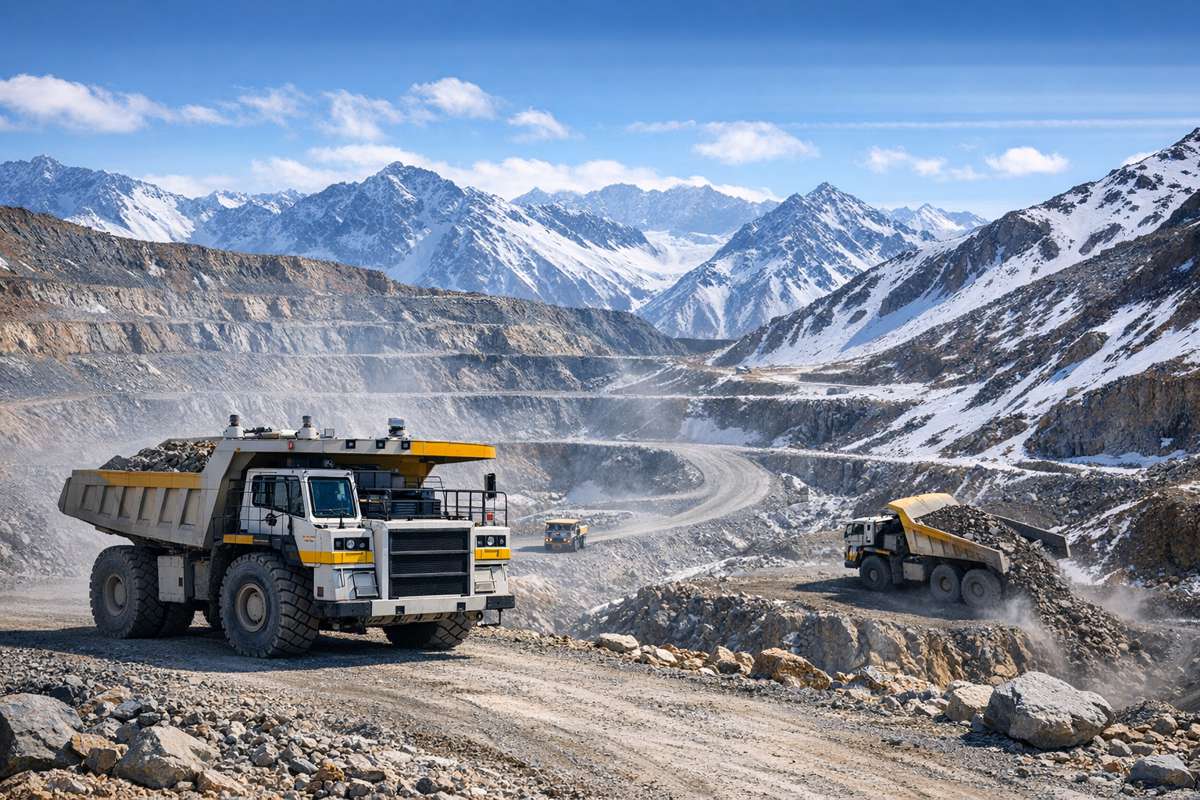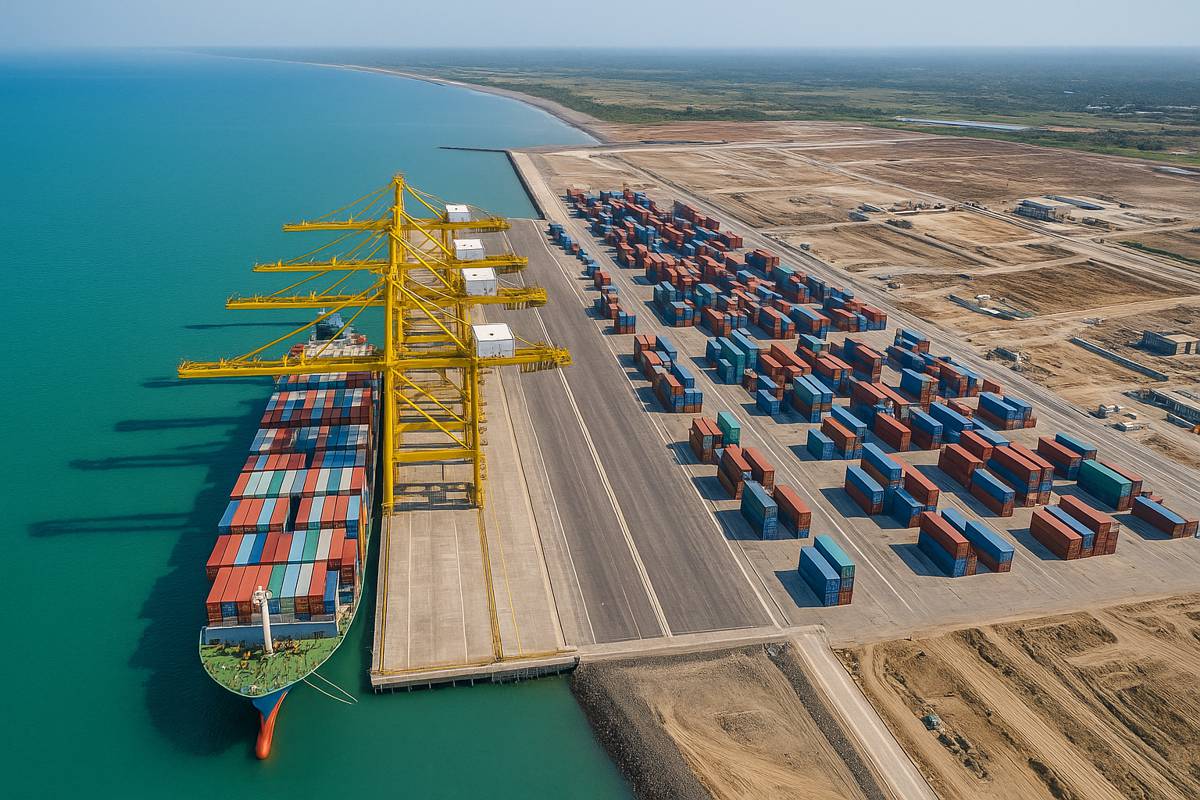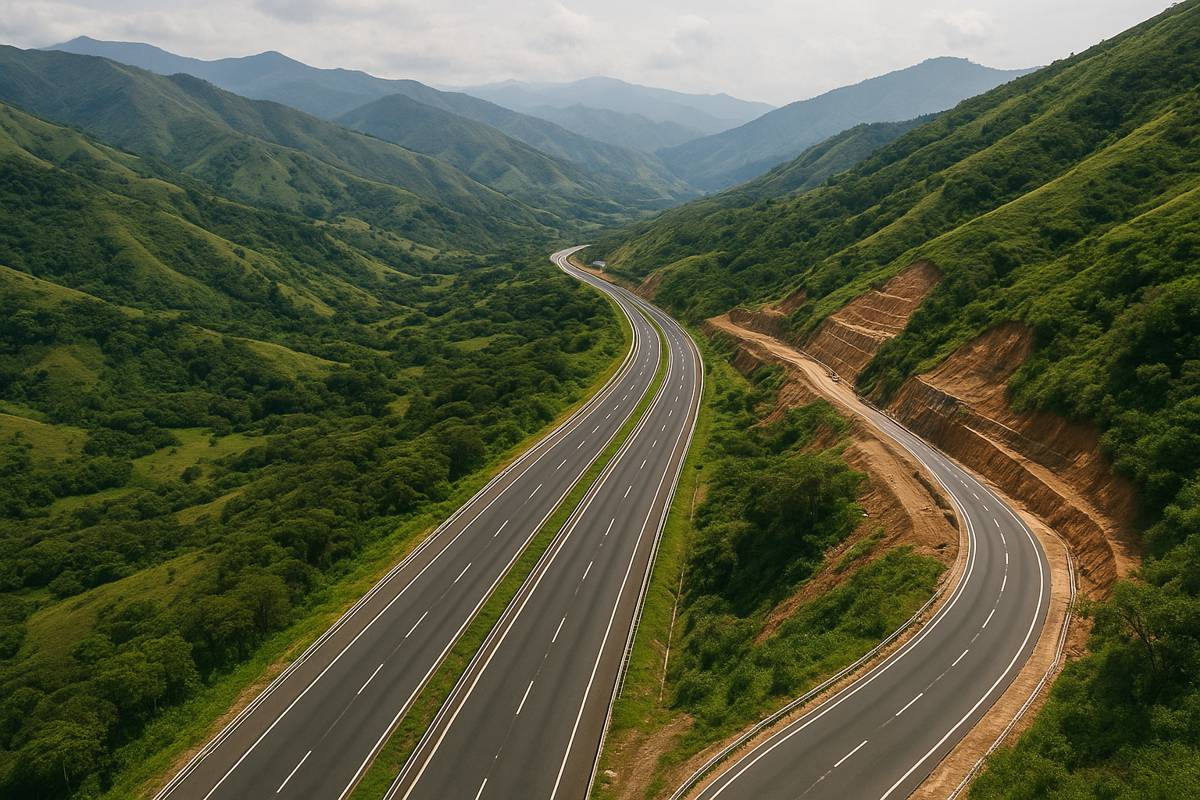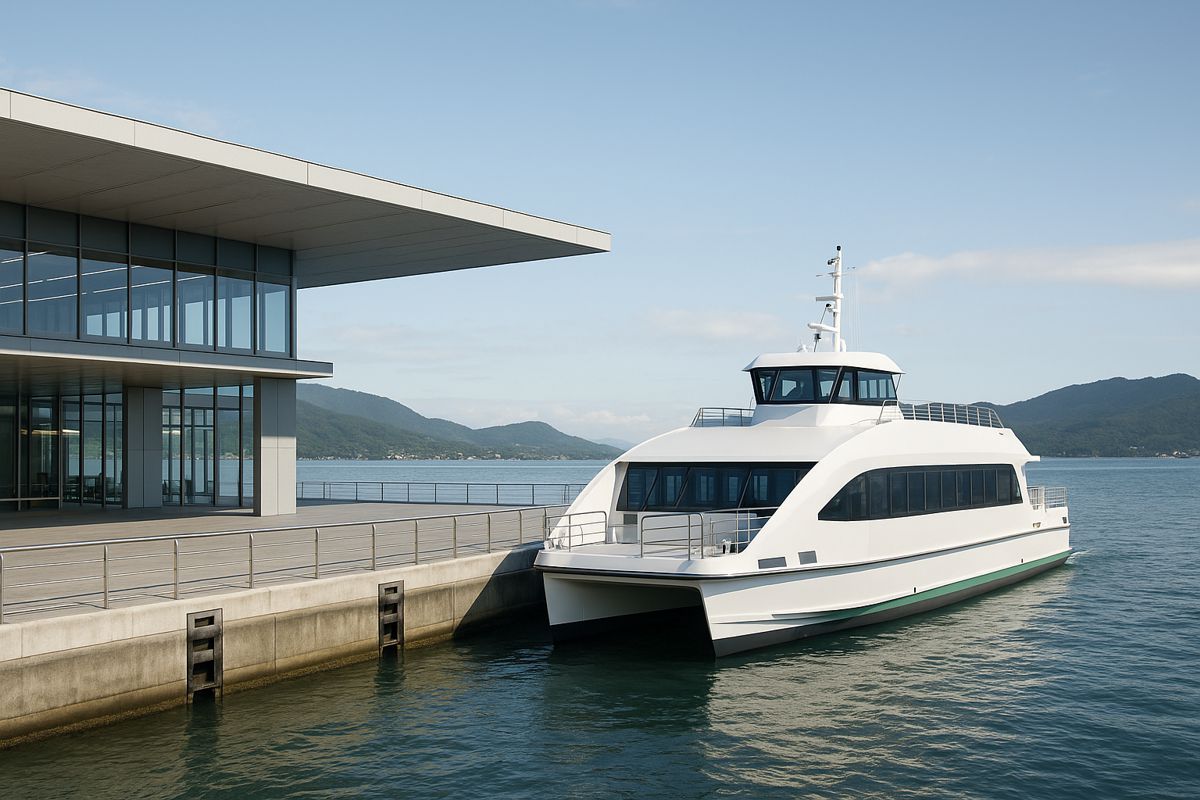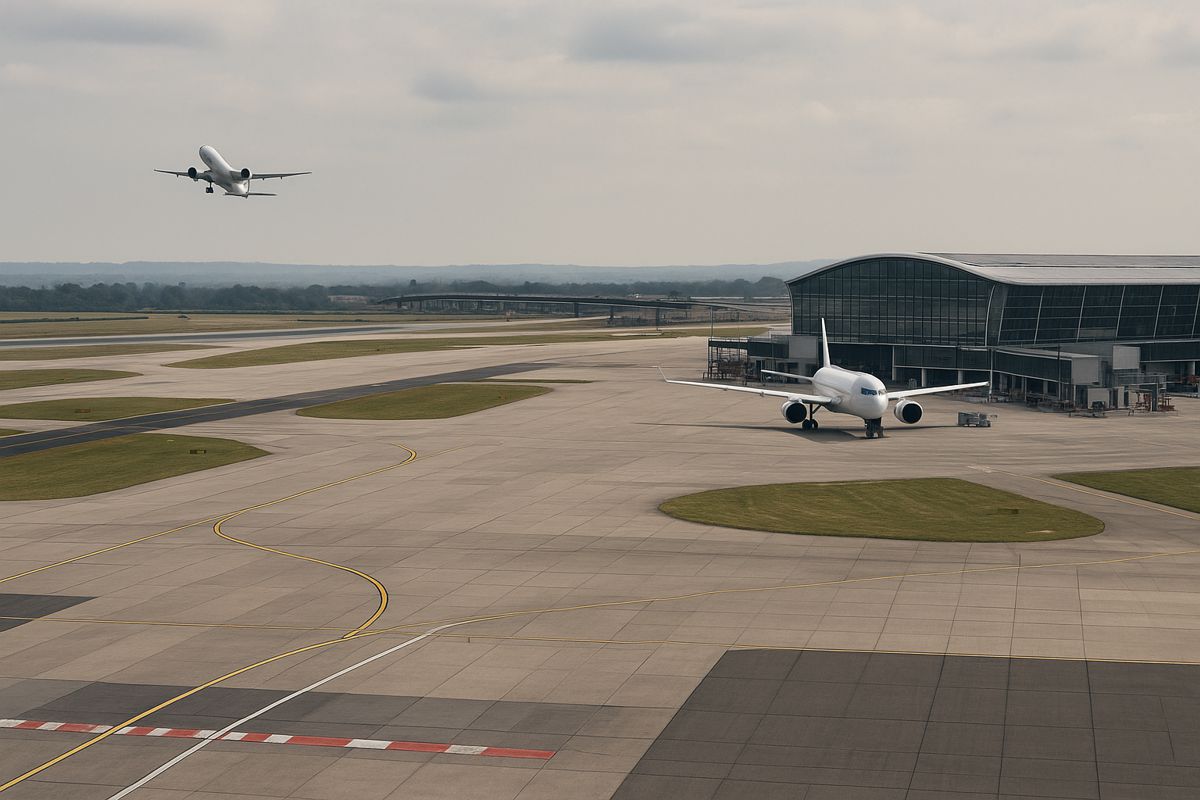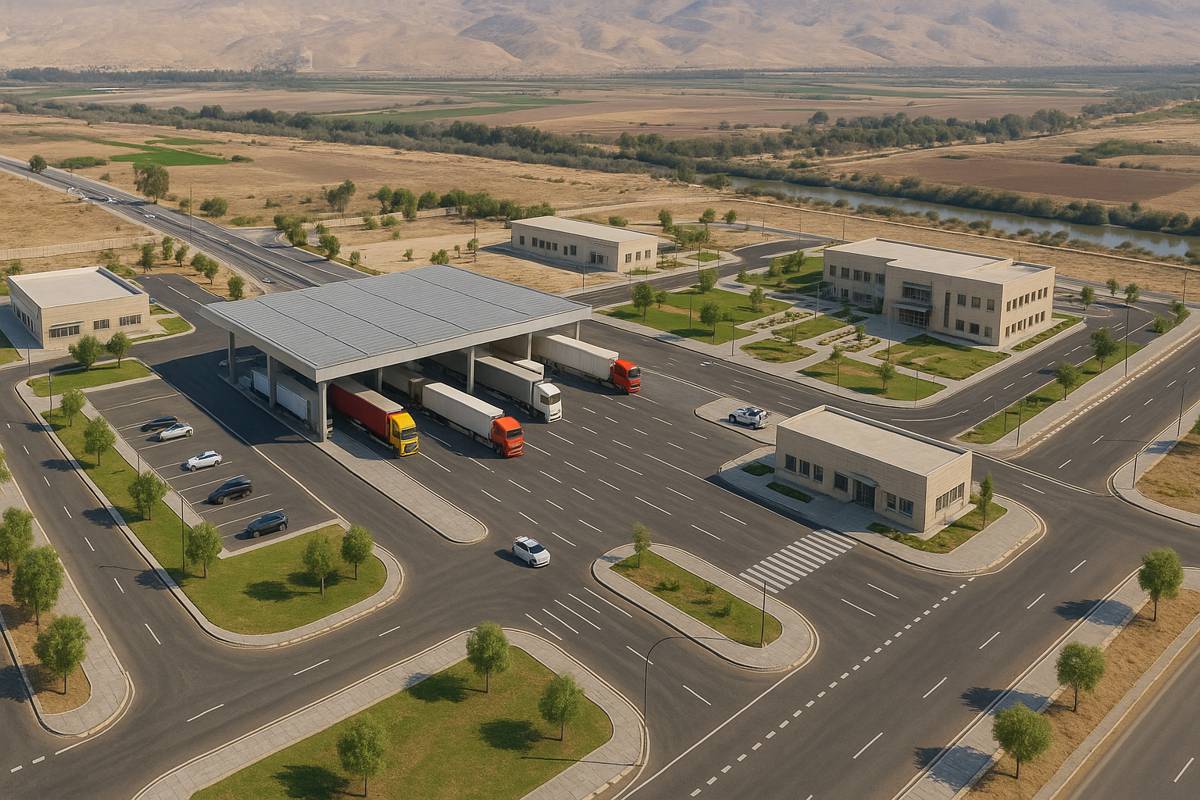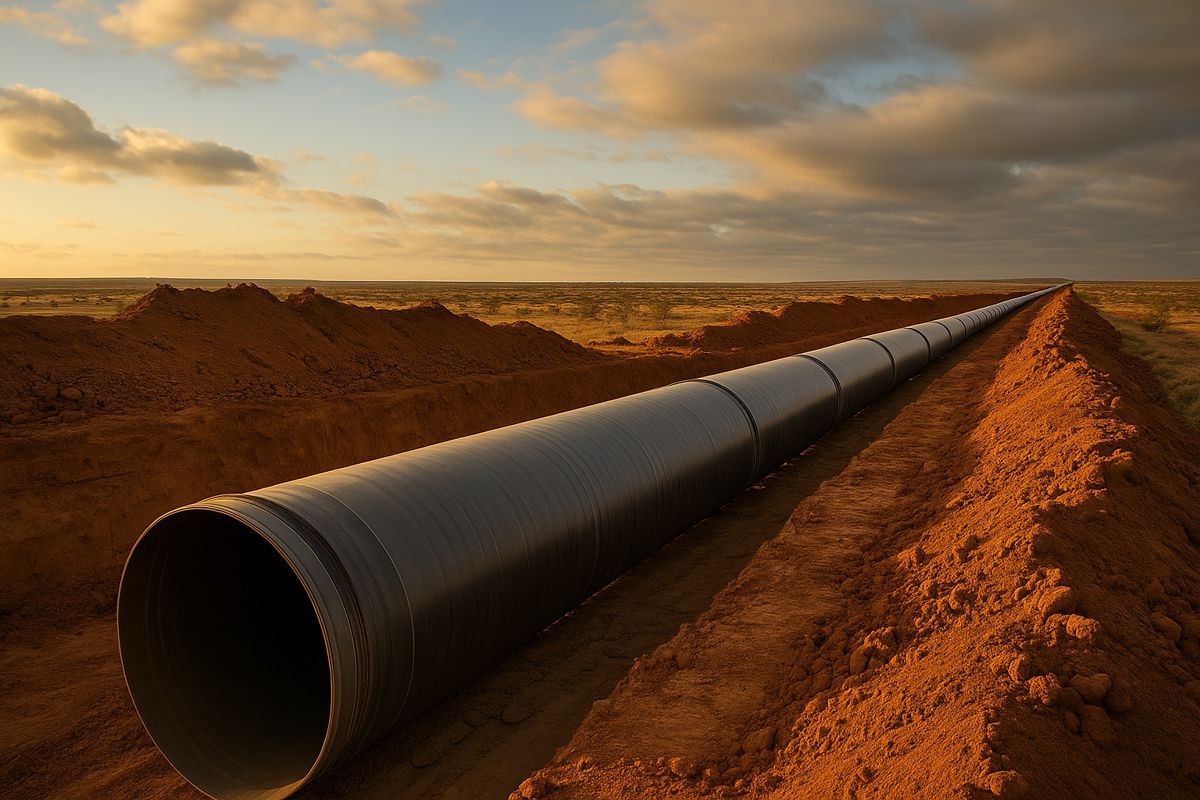China’s World Record Huajiang Grand Canyon Bridge Opens
China has just shattered the world record for bridge height. Officially opened on 28 September 2025, the Huajiang Grand Canyon Bridge soars 625 metres (2,051 ft) above the Beipan River in Guizhou province.
Stretching 2,890 metres across a deep gorge, this suspension span eclipses its nearest competitor, the nearby Beipanjiang (Duge) Bridge, which held the title at 565 metres. In practical terms it cuts a former two‑hour mountain road journey to just minutes. As Zhang Yin of Guizhou’s transport department notes: “The opening of the Huajiang Grand Canyon Bridge reduces travel time between the two sides from two hours to two minutes”. This record‑breaking highway link (part of the new Shantian-Puxi Expressway) now connects isolated valleys and slashes regional travel times almost overnight.
Guizhou’s new mega bridge is also a tourist magnet. Even before some visitor attractions opened, thousands flocked to the bridge daily. Safety worker Mr Fu, who spent years on bungee decks elsewhere, says the sensation is unreal: “The view from the bridge is fantastic,” he told the Guardian. “Beneath the bridge flows the Beipan River… It is very exciting, the bridge is very high, and many visitors come. Standing on it yourself feels thrilling as well”.
Riders can take a high-speed glass elevator to a sky‑high café 800 metres above the valley. Below their feet the deck has a glass-bottomed walkway 580m over the drop. One thrilled passer-by said the cars below looked “as small as ants” and that it felt “as if I could reach out and touch the clouds”. Local innkeeper Lin Guoquan reports full houses: “Since it opened, I’ve crossed the bridge four times… Now, I can see the world’s tallest bridge right from my courtyard.”. In short, the Huajiang span promises not only a record, but also a tourism boom for this once-remote gorge.
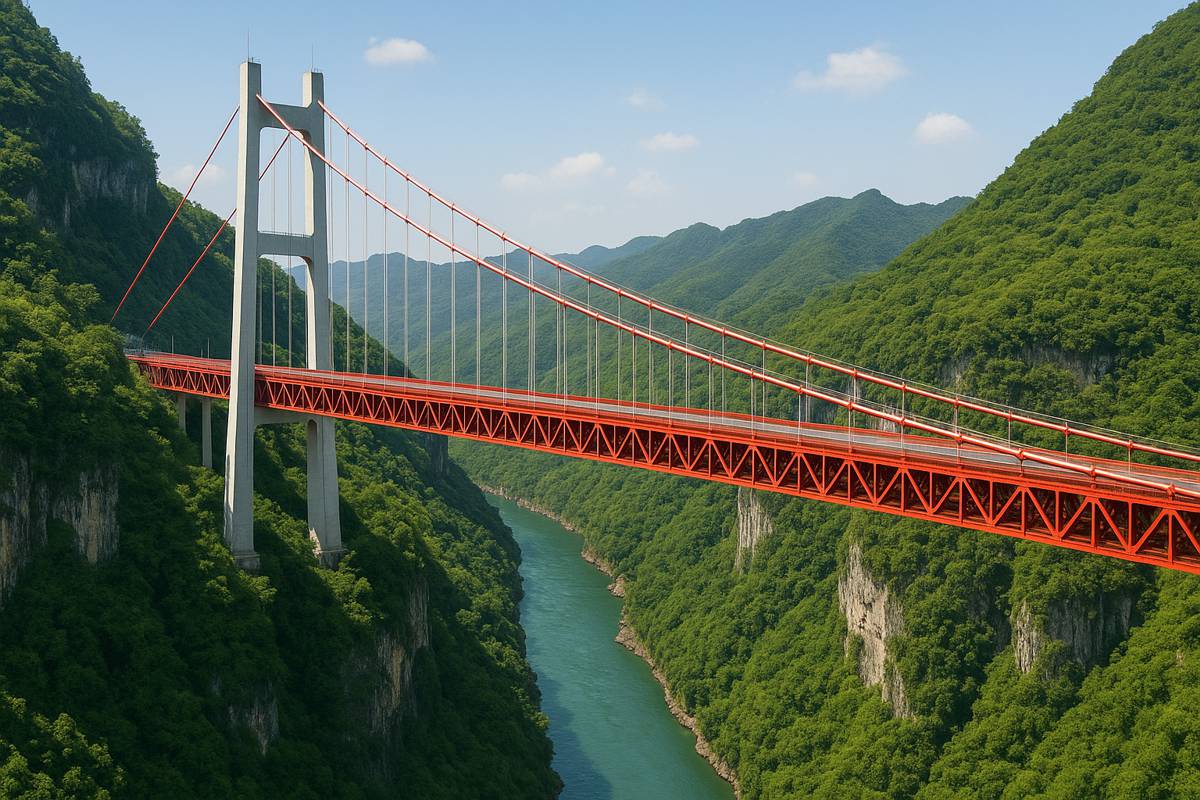
Engineering Innovation and Design
For engineering teams the Huajiang Bridge is a masterpiece of modern design. The main span stretches 1,420 metres between two massive towers (262m and 205m tall), carrying four lanes of expressway traffic. Designers chose a steel-truss suspension system to blend strength with aerodynamic flexibility. Indeed, the truss superstructure alone weighs roughly 22,000 metric tonnes, equivalent to three Eiffel Towers.
To withstand howling canyon winds and support this record span, Chinese engineers forged novel solutions. They employed 2,000‑MPa high‑strength steel cables and an intelligent cable-hoisting system, achieving breakthroughs in wind-resistant deck design and high-altitude construction. Over 20 patents were filed on the project’s key innovations (cable anchoring, materials and control systems). Even the bridge’s health is under continuous watch: fibre‑optic sensors are embedded along the main cables to measure stress, temperature and vibration in real time, ensuring any issue is spotted long before it becomes critical.
The scale of Chinese bridgebuilding comes into view when considering these feats. The Huajiang span required assembling a mile-long deck atop towers the height of skyscrapers, deep inside rugged karst mountains. Construction crews worked at dizzying altitude, threading miles of cable and concrete across unstable terrain. Local drone pilot Xie Chaoqing, who livestreamed the build, marvelled at the scenes: “My favourite view is that of construction workers going up and down on the cables… It shows how great our workers are. China’s infrastructure is indeed very impressive.”. Their work came in under four years (from January 2022 to early 2025), a blistering pace for a bridge of this complexity.
Chinese engineers are solving equally stiff challenges on other recent projects. For example, the new Changtai Yangtze Bridge in Jiangsu (opened 2025) sports a 1,208m main span carrying both high-speed rail (200km/h) and highway on the same deck. Lead designer Qin Shunquan explained that to balance the asymmetrical traffic load, with the heavy rail line on one side, his team had to precisely adjust cable tensions mid-build. This kind of inventive engineering (the first large-span bridge with side-by-side rails and road) shows the lengths to which China’s bridge designers will go to meet specific regional needs.

Overcoming Construction Challenges
Building mega‑bridges in China’s mountainous west is no mean feat. On Huajiang’s site, workers faced frequent rainstorms, fog and extreme cliff heights. Teams used advanced monitoring and lifting technologies to place thousands of tonnes of steel and concrete high over the canyon. State media notes “multiple technological breakthroughs in wind-resistant design, high-altitude construction” during the Huajiang build.
Crews set new records for span‑by‑span erection and cable spinning at extreme elevation. Time-lapse footage of the project shows cables being spun across the gorge and segments being lifted into place one by one, a painstaking choreography guided by satellite surveying and drones. As one engineer quipped on site, hanging a cable 600 metres in the air “turns an impassable gorge into a passage,” a change that will “spur development for residents” nearby.
In short, these bridges succeed by turning China’s thorniest terrain into an opportunity, rather than an obstacle.
Despite the impressive record, experts note that such speed demands tight project management. In recent years, China’s rush to build has prompted debates about safety protocols and quality control. But for Huajiang, officials have highlighted rigorous real-time testing and hundreds of thousands of safety hours during construction.
By the time vehicles rolled on the deck in 2025, the structure had passed exhaustive load tests and 3D stress simulations. And local authorities limited initial bridge traffic to 5,000 people per day to ensure smooth operations. In Guizhou today, drivers cross in cars or even motorcycles under careful supervision, but the facility has quickly become a source of local pride.

Economic Impact and Connectivity
This mega-bridge is more than an engineering trophy, it’s a new economic engine for Guizhou. The once-reclusive province is among China’s poorest, long held back by rugged terrain. State planners have made building roads and bridges a pillar of poverty alleviation in recent decades. As a Times of India analysis notes, “the region has focused heavily on building roads and bridges to improve connectivity. Back in the 1980s, Guizhou had just around 2,900 bridges. Today, that number has skyrocketed to over 32,000 bridges”. The Huajiang span fits this strategy exactly.
By linking the Qianxinan prefecture to Anlong County via expressway, it integrates formerly isolated towns into the wider economy.
Local officials expect big boosts in trade and tourism. Zhang Yin emphasised that the bridge’s opening “makes enormous improvements to regional transportation conditions and injects new impetus into regional economic and social development”. With the canyon trip cut to two minutes, farmers can ship produce and goods far faster. Reports in China Daily and AFP highlight how scenic sites nearby (such as Huangguoshu Waterfall) will now be far easier for visitors to reach. Even before the bridge fully opened, entrepreneurs were gearing up: many villagers in Huajiang are converting old houses into guest lodgings and running tea shops by the roadside. One local writes that the bridge’s debut made him “fully booked” for days on end.
Key factors behind this impact include these features: the bridge is part of the new 190km Shantian-Puxi Expressway project, creating a fast link for the regional highway network. It also includes a glass-walled restaurant and observation deck in one tower, raising the profile of the canyon. Altogether, analysts say the Huajiang span will turn a narrow gorge into a vibrant corridor, helping merchants, tour operators and even cultural exchanges to flourish. In Changsha City’s Fortune magazine words: China’s “top-down” infrastructure push, exemplified by projects like Huajiang, is explicitly meant to “drive economic development and regional connectivity”.

China’s Bridge-Building Revolution
The Guizhou bridge is only the latest in a string of Chinese megaprojects. China now hosts the lion’s share of the world’s most extreme bridges: it boasts all of the top 7 highest and nearly half of the 100 tallest bridges globally. For comparison, here are a few recent headline-grabbers:
- Hong Kong-Zhuhai-Macau Bridge (2018): A 55km sea‑crossing (including viaducts and a 6.7km immersed tunnel), this is the world’s longest fixed link, connecting three major cities in the Pearl River Deltamultimedia.scmp.commultimedia.scmp.com.
- Changtai Yangtze River Bridge (2025): As noted, this 10.3km cable‑stayed bridge in Jiangsu province carries a 1,208m main span that supports an expressway, highway and high‑speed rail side by side.
- Beipanjiang (Duge) Bridge (2016): The previous height champion, this Guizhou span still stands at 565m above the valley floor. It pointed the way for even higher decks.
- Hangzhou Bay Bridge (2008): Spanning 36km across the bay between Shanghai and Ningbo, this record breaker was the world’s longest sea bridge when it opened.
China has poured tens of billions into such projects. The payoff, officials argue, is huge. By shrinking natural barriers, these bridges knit the vast country closer together and stimulate investment in remote areas.
Foreign infrastructure analysts note that this grand connectivity push transforms regions long cut off by mountains and rivers.

A Bright Horizon Ahead
In Guizhou’s canyons the impact is already clear. Villagers remember a time of bamboo rafts and winding footpaths; today they see modern skyscraper‑tall towers arching over their homes. As former Huajiang Village head Liang Shaoyu says: “The opening of the bridge brings huge actual benefits… Now with better roads, come greater opportunities”. Across the region, entrepreneurs and engineers now speak excitedly of new projects.
Some local entrepreneurs are even offering helicopter tours from the canyon rim or turning historic dwellings into tourist inns, betting on rising visitor numbers.
The Huajiang Grand Canyon Bridge thus stands as a symbol of China’s continuing investment in infrastructure, a colossal achievement that marries cutting‑edge design with real-world impact. It embodies the idea that hard-to-reach places can be reached after all.
By literally bridging an unpassable gorge, China demonstrates that it intends to lift every valley and village into the modern economy. In the words of Guizhou engineers: these are “vital arteries” of development, turning barriers into pathways to prosperity. The age of sky‑high connectivity has well and truly arrived.









